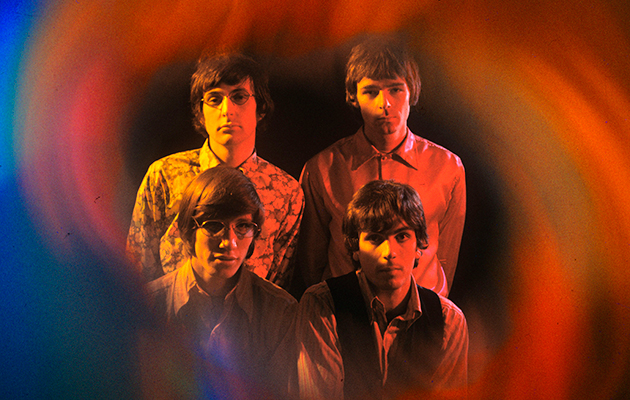With the release on March 24 of Pink Floyd The Early Years, 1965 – 1972: The Individual Volumes and the opening of the The Pink Floyd Exhibition: Their Mortal Remains exhibition at the V&A on May 13, we dig deep into the group’s archives, as band members, collaborators and associates lead us fr...
On January 20, 1968, Pink Floyd performed their last ever gig with Syd Barrett, at an end-of-the-pier show in Hastings; something of a dismal finale for the band’s chief songwriter and creative architect. They had played a few gigs as a five-piece, with new recruit David Gilmour, earlier in the month, but from then on, their new guitarist and vocalist took over all of Syd’s parts, while the group set out on a long quest to learn how to write songs.
“I was in the studio once with the five-piece lineup when they were trying to record,” remembers Aubrey Powell, “and Syd couldn’t function. I think he’d taken Mandrax. He was in the process of seeming to play his guitar, but the plectrum was not touching the strings. He thought he was playing, but he wasn’t.”
“It’s so complicated,” laments Andrew King. “The band were devoted to Syd, and at the same time couldn’t work with him. It was very difficult.”
“I don’t really remember that gig,” admits Nick Mason. “I know we did it; there were only two or three of those combined five-piece things. But Hastings Pier wouldn’t have been our finest moment in terms of the fanbase.”
“It is heartbreaking,” adds King. “You can look at geniuses through the ages, and they often just create so much grief in their wake. Look at someone like Charlie Parker… That’s the price you pay for having the Charlie Parkers and Syd Barretts of this world. It’s a long time ago now, and my life has changed several times since then, but I still feel guilty about Syd. The Floyd have obviously felt guilty – I mean, all the rest of Roger’s writing is about Syd in a way, isn’t it? The Wall is about Syd. Wish You Were Here, obviously.”
As well as paying tribute to their now irreparably damaged friend on the likes of 1975’s “Shine On You Crazy Diamond”, Waters, Wright and Gilmour produced much of Barrett’s two solo LPs, The Madcap Laughs and Barrett, both released in 1970, before Syd, painter, piper, prisoner, retreated to Cambridge. However, the careers and lives of all of Floyd, along with Jenner and King, continue to bear the scars of the events of the second half of 1967, even if they still struggle to explain what took place.
“We were so blinkered,” says Mason. “I maintain that we looked after Syd very badly – but we didn’t know any better. There’s still the belief that it was LSD damage, but it could have been perfectly straightforward, that he wanted to be an artist and not a pop star. And actually, that could break you, and certainly not do you any good at all to be forced down a road you didn’t want to go.”



